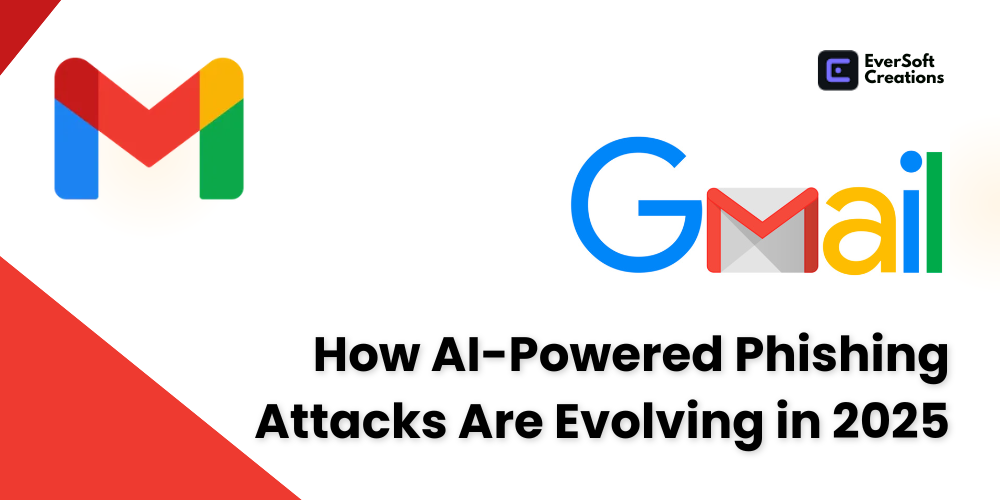The online email platform Gmail continues to undergo cybercriminal focus because of its international user base of over 3 billion people. Medical services have experienced unheard-of sophisticated phishing attacks through artificial intelligence-generated emails and social engineering and deep fakes used to trick traditional security systems in 2025.
Google together with the FBI and security experts have given recent warnings about attackers who now use Google’s infrastructure to launch convincing fraudulent schemes. Any account that depends on passwords and SMS-based 2FA remains exposed to severe security threats.
You can also read Google’s Safety & Security blog for more.
The following blog presentation will analyze different concepts.
- Online attackers use AI technology for their latest phishing strategies that target Gmail users.
- Current security approaches consisting of passwords and SMS 2FA no longer function adequately in protecting accounts.
- Several practical measures exist for protecting your account during 2025.
The Rise of AI-Powered Phishing Attacks on Gmail
The tools of WormGPT and FraudGPT built by cybercriminals use artificial intelligence to develop perfect fake phishing emails which exactly match real corporate communications. Modern scams using AI technology produce emails which appear as genuine messages to human readers since they lack the grammar problems typical of older scam messages.
How These Attacks Work
- Legitimate-looking emails from Google: Attackers use
DKIMsignatures (email authentication) in their attempts to send deceptive security alerts fromno-reply@google.comwhich leads users to provide credentials on phishing pages. - Open Graph Spoofing: By manipulating link previews hackers create unsafe URLs which appear harmless to users and boost their click rate numbers.
- AI-Powered Personalization: Scammers use victims’ social media and email monitoring to build “spear phishing” assaults that are specifically made to trick their targets.
FBI Warning: “Phishing attempts which employ AI have become more difficult to detect since they now represent almost half of all cybercrime incidents.”
Why Passwords & SMS 2FA Are No Longer Enough
The official warning issued by Google calls for users to abandon password security regardless of their activating two-factor authentication (2FA). Here’s why:
The Flaws in Current Security Measures
- SMS 2FA Bypass: Gorilla malware intercepts communication of one-time codes sent by text so hackers can take over accounts.
- Password Theft via Phishing: Attackers extract victim credentials on fake login pages to acquire complete access to all connected services such as Google Drive and G Pay.
- Backup Password Vulnerability: Passkeys do not eliminate Google’s provision of password logins as a backup system which leaves attackers with an opportunity.
Google’s Urgent Advice: “You should use passkeys which connect to your hardware device because they resist phishing attacks.”
How to Protect Your Gmail Account in 2025
Immediate Steps to Secure Your Account
Enable Passkeys – Users should transition from passwords to biometric or FIDO2 security keys which Google suggests as the optimal solution.
Ditch SMS 2FA – Alternative authentication methods should be used through either Google Authenticator or hardware key systems.
Check for Suspicious Third-Party Access – Users should disable all privacy permissions in Google Account Settings that they no longer need.
Enable Google’s Advanced Protection Program – The solution extends multiple security measures to protect users at high risk.
Red Flags to Watch For
- Google does not contact users without warning so any request for security actions must be ignored.
- The emails are sent from invalid support domains such as
support@google-support.comwithout inclusion of the standard@google.comdomain. - Attackers exploit malware to request users disable their security settings because such requests are typical in malware campaigns.
Advanced Protection for Businesses
- Owners should use AI filter systems such as Trustifi to spot complex phishing attempts.
- The organization needs to provide training for employees about recognizing deepfake scams generated by AI technologies.
- The organization requires employees to confirm payment and access approvals through an alternative system.
The Future of Gmail Security: What’s Next?
Security professionals proclaim cybersecurity to be a continuously evolving challenge because both quantum computing and AI-driven fraud systems are approaching. Experts predict.
- Users face an increased risk from AI-generated phone and video scam attempts that pretend to be CEOs or colleagues in their organization.
- Users need to be aware that attackers conceal malicious links under QR codes in scanned images for phishing attacks.
- The establishment of password-free authentication systems at Google is expected due to Microsoft’s decision.
Final Thoughts: Stay Vigilant!
Computers experience a rapid increase in phishing attacks while security measures with awareness can protect users. Moving to passkeys should be your first step while also inspecting your account permissions and checking all unexpected emails before responding.
Pro Tip: Bookmark this guide and share it with friends—cybersecurity is a team effort!
Want more tech tips? Visit Eversoft Creations for updates!



